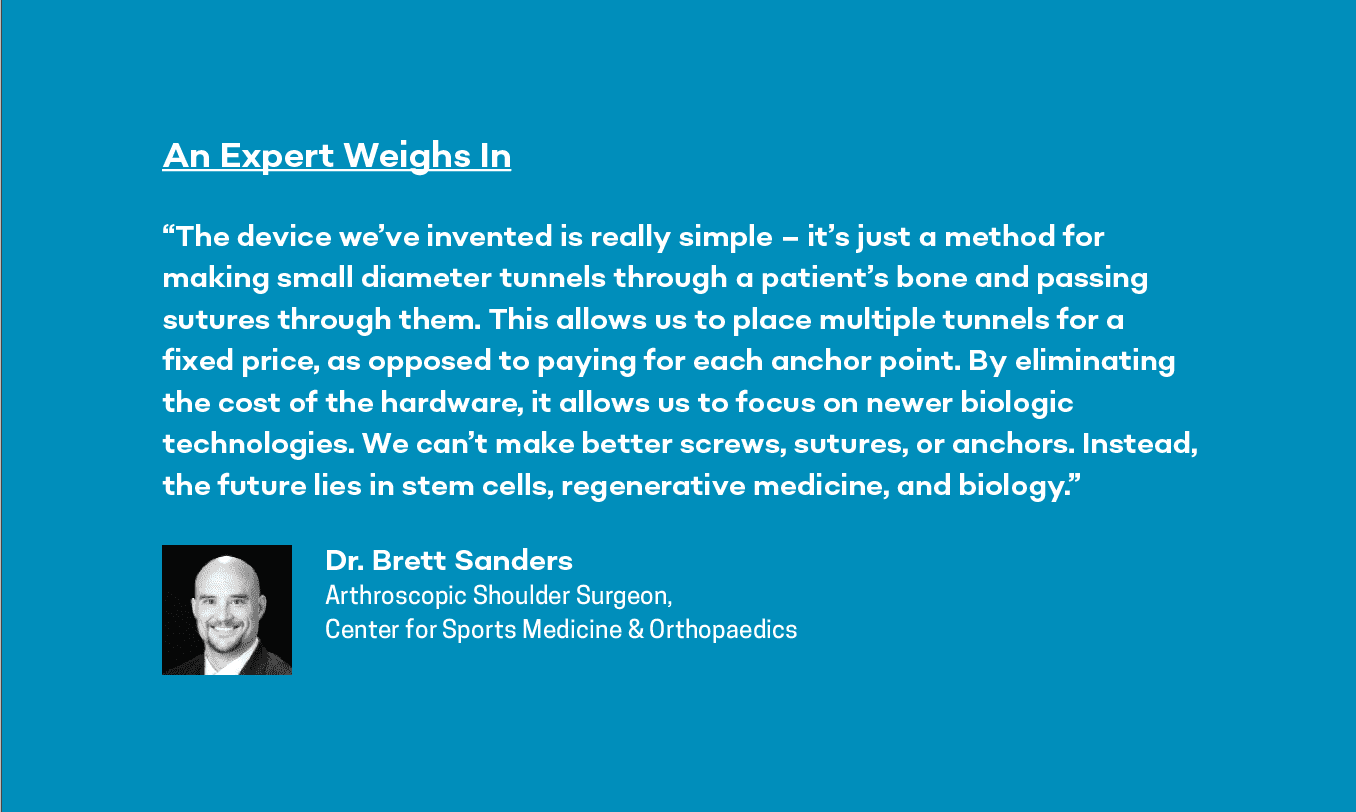Understanding Rotator Cuff Tears
Your rotator cuff is a group of muscles and tendons that surround your shoulder joint and make it possible for you to lift and rotate your arm. Unfortunately, a rotator cuff tear is a common injury among adults, affecting approximately two million people in the United States.
There are two types of tendon tears that can occur – a partial tear, also called an incomplete tear, and a full-thickness tear, also known as a complete tear. While the full-thickness tear is more serious, both types of tears cause pain and limit mobility.
New Solutions
Originally, tendons were repaired through bone tunnels. In the last few decades, arthroscopic (minimally invasive) anchor-based repairs were standard for rotator cuff tears. With this procedure, a surgeon uses metal or plastic anchors to help reattach the torn tendon to the bone. First, anchors are nailed into the bone. Then, the surgeon sutures the tendon back to the bone using the anchors.
Today, a new method called transosseous tunneling makes the surgery easier, less painful, and more affordable, while maintaining the benefits of arthroscopy. This procedure eliminates the need for anchors. Instead, using a special tool, small diameter tunnels are made directly into the shoulder bone. This allows sutures to pass through the bone when reattaching the tendon. Because of this, surgeons can create as many tunnels as necessary while lowering cost and complications of anchors.
What to Expect from the Procedure
With this outpatient surgery, you will first be given a block to numb the nerves in the shoulder. Then, your surgeon will go in and make any necessary tunnels through your shoulder bone and reconnect the tendon. The surgery lasts approximately one hour and will keep you in a sling for four to six weeks. After that, you can expect around three months of physical rehabilitation.
Benefits to Patients
The benefits to patients are many. Beyond reducing both cost and pain, transosseous tunneling takes advantage of your body’s natural healing characteristics. By tunneling directly through the bone marrow, there is nothing blocking your stem cells from filling the surgical site and repairing the damage quickly. This is a biological process known as regenerative medicine, and it’s considered a gateway to future intervention and innovation. HS


